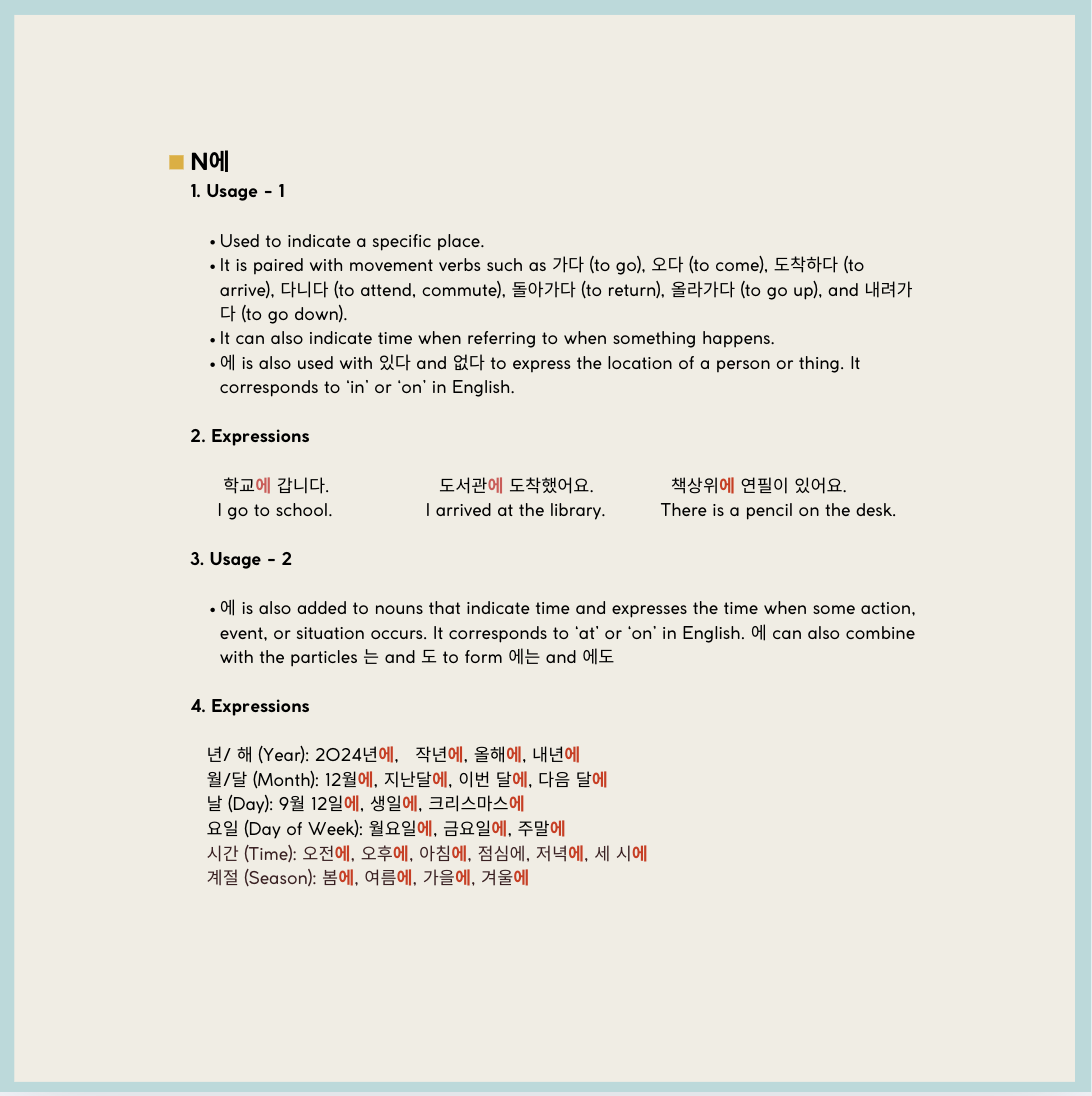N에
1. Usage - 1
Used to indicate a specific place. It is paired with movement verbs such as 가다 (to go), 오다 (to come), 도착하다 (to arrive), 다니다 (to attend, commute), 돌아가다 (to return), 올라가다 (to go up), and 내려가다 (to go down). It can also indicate time when referring to when something happens. 에 is also used with 있다 and 없다 to express the location of a person or thing. It corresponds to ‘in’ or ‘on’ in English.
2. Expressions
학교에 갑니다. I go to school.
도서관에 도착했어요. I arrived at the library.
책상위에 연필이 있어요. There is a pencil on the desk.
3. Usage - 2
에 is also added to nouns that indicate time and expresses the time when some action, event, or situation occurs. It corresponds to ‘at’ or ‘on’ in English. 에 can also combine with the particles 는 and 도 to form 에는 and 에도
4. Expressions
년/ 해 (Year): 2024년에, 작년에, 올해에, 내년에
월/달 (Month): 12월에, 지난달에, 이번 달에, 다음 달에
날 (Day): 9월 12일에, 생일에, 크리스마스에
요일 (Day of Week): 월요일에, 금요일에, 주말에
시간 (Time): 오전에, 오후에, 아침에, 점심에, 저녁에, 세 시에
계절 (Season): 봄에, 여름에, 가을에, 겨울에
N에서
1. Usage
Used when an action or activity happens in a specific place. It can also indicate the starting point of movement.
2. Expressions
카페에서 친구를 만났어요. I met my friend at the cafe.
학교에서 공부해요. I study at school.
Difference Between [N에] and [N에서]
[N에] simply indicates the destination or location of existence. [N에서] indicates that an action occurs at the place or that it is the starting point. 저는 도서관에 갑니다.I go to the library. 저는 도서관에서 책을 읽어요. I read books at the library.

'한국어교육' 카테고리의 다른 글
| 날씨와 계절 (Weather & Season) (0) | 2025.02.10 |
|---|---|
| [Speaking] Can you~? (0) | 2025.01.14 |
| 숫자 - 물건 가격 - 이거 얼마예요? How much is it? (0) | 2024.12.08 |
| 장소를 나타내는 전치사 (0) | 2024.11.27 |
| 문법 [N이/가 있어요, 없어요] 단어 [물건 : Things] (0) | 2024.11.26 |



